The most important WORKS of DELACROIX
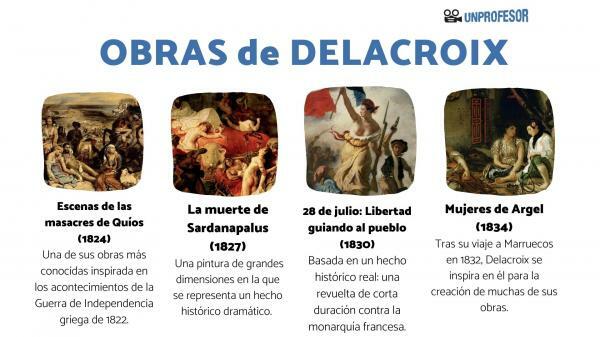
Delacroix (1798-1863) is considered French romantic movement leader, standing out for his concern for movement, exoticism and emotion. Thus, his paintings are pulsating, full of life and full of emotion, opting for themes that avoid conventions. academic scenes, representing scenes from the history of his time on a large scale and with a great dramatic charge or from his travels through the north of Africa.
In this lesson from unPROFESOR.com we offer you a selection of the Delacroix's most important works so that you can admire the most relevant characteristics of his artistic style.
Index
- Delacroix style characteristics
- Scenes from the Chios massacres (1824): one of Delacroix's most important works
- The death of Sardanapalus (1827)
- July 28: Liberty Leading the People (1830)
- Women of Algiers (1834)
Characteristics of the Delacroix style.
Delacroix was one of the most important painters of Romanticism in art and, before studying the most outstanding works of him, we are going to know the characteristics of his style. They can be summarized as follows:
- The emotional content he is above rationality and order, deciding on dramatic scenes drawn from contemporary history and literature.
- To convey that dramatics, Delacroix uses energetic brushstrokes and dynamic compositions.
- His works also show his admiration for animalsespecially by the wild and untamed.
- In general, experts consider Delacroix to be a true virtuoso for trying numerous types of compositions and their harmonious use of color. His knowledge of the division of tones and the harmony of opposites led him to be an excellent colorist.
- By accepting numerous commissions for ceilings and murals, Delacroix learned to navigate the big scale, liberating painting from the limits of the easel.
Scenes from the Chios Massacres (1824): one of Delacroix's most important works.
This Delacroix painting is one of his best known works. It is inspired by the events of the Greek War of Independence of 1822, during which Ottoman Turkish troops invaded the island of Chios and massacred thousands of rebellious Greeks.
Delacroix tries to show us all the historical drama of its protagonists drawing on the conventions of classical narrative painting in which order, regularity and a sense of control prevailed. They are real events, close and contemporary, not remote like mythological ones, and Delacroix tries bring the viewer closer to that suffering and intensity, but not about the battles, but those of the aftermath of the war. To do this, the author uses a complex compositional structure with different groupings of figures and a great wealth of colors.
In the foreground of the canvas a group of anguished Greek men, women and children are seen lying on the ground. On the left, a man dies while his wife leans on his shoulder; on the right, a dead mother leans on an old woman. Behind them, on the right, an Ottoman Turk charges a group of men dragging a naked prisoner while a figure tries in vain to stop him with his hands raised. In the background, a series of figures is depicted fighting in a devastated landscape. The large scale of the canvas brings a monumental air to the suffering of the Greeks and brutally impacting the viewer.
The work was not well received when it was exhibited at the Paris Salon, as many critics felt that he represented the Greeks as victims, and not as fighters. For decades, Delacroix battled negative reviews of his paintings. However, their unconventional approach gained appeal among other artists and viewers, and favored the rise of the romantic movement, influencing the work of modern artists such as Gustave Courbet and Edouard Manet.
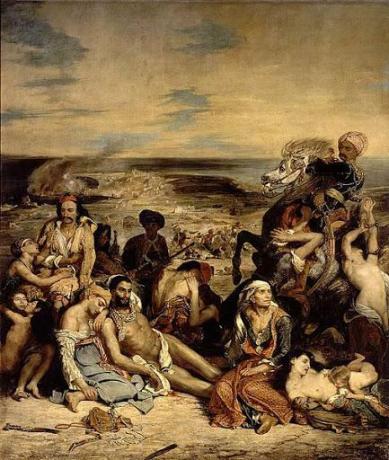
The death of Sardanapalus (1827)
This is also a large painting in which a dramatic historical event is represented. Delacroix shows us the last moments of the Assyrian king Sardanapal, who ordered the destruction of all his possessions during the siege of his palace. Thus, before admitting defeat, this king preferred to die, showing Delacroix just before his suicide.
The king appears dressed in white and reclining on a large bed with red curtains, as he watches the chaos spread around him. A slave has collapsed on the bed next to the king, while another awaits her death at the hands of an attendant. The King's chamber appears full of riches that will soon burn in the flames of the funeral pyre.
The story of Sardanapalus was very popular with romantics, inspiring many artists of the 19th century. Thus, Delacroix is inspired by a Byron work for this painting.
The painting shows the color mastery of the artist, especially his use of the color red as a symbol of luxury and decadence. A domain that would inspire early modern artists like Manet and Cézanne. His painterly brushstroke also stands out, very different from the controlled neoclassical touch.
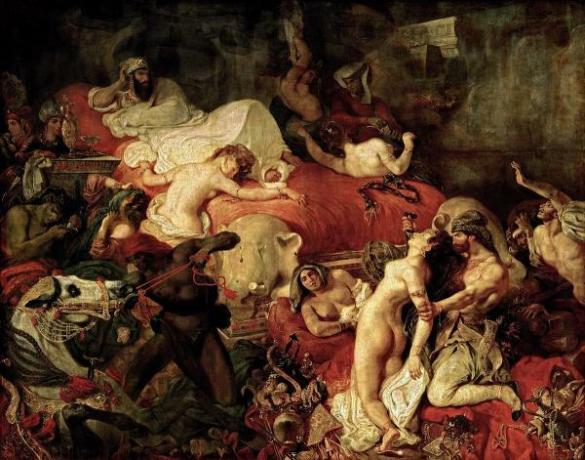
July 28: Liberty Leading the People (1830)
In addition to one of Delacroix's most important works, Freedom guiding the people is one of the most iconic paintings of the artist. It is also based on a real historical event: a short-lived revolt against the French monarchy that ended the reign of King Charles X. Delacroix wanted to honor the brave revolutionaries in a painting
The painting is full of symbolism. Thus, the unity of classes is represented by the presence of a bourgeois fighting alongside the lower classes; meanwhile, the national colors of France (blue, white and red) are repeated throughout the composition, both in the flag more obviously, but also in the smoke tones and the sky, and in the clothes of the kneeling figure that looks up, towards the woman who serves as an allegory of the notion of Freedom and by extension of the Republic itself French. Delacroix shows her as a warrior advancing and leading the people.
Delacroix turns to capture the patriotic spirit of that moment, becoming a visual icon of revolution and freedom. A work in which both the most fascinating side of the revolution and the violence that goes with it appear. Delacroix's image of freedom would become a symbol of republicanism in France, appearing on coins and postage stamps, and placing Delacroix among the greatest artists of France.
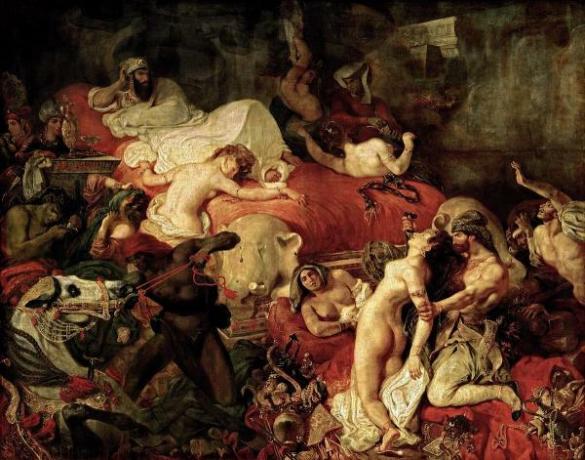
Women of Algiers (1834)
After his trip to Morocco in 1832, Delacroix was inspired by him to create many of his works. On this canvas he presents three Algerian women with brightly colored clothes they are sitting on the floor of a richly decorated interior. The woman on the left is reclining on a pillow and looks up at the viewer as they appear to be conversing. At the far right, a servant girl walks away with her back to the viewer.
Both in terms of theme and style, this work shows us the transformation in the painter's style during his journey. Thus, Delacroix shifts to a sensual and rich color palette, great attention to detail and a huge taste for romantic exoticism. In fact, the colors in this painting directly influenced artists such as Cézanne, Renoir, and Matisse, whose many odalisques are inspired by these North African scenes by Delacroix.
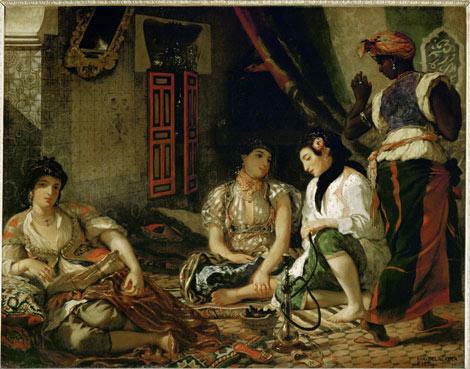
If you want to read more articles similar to Delacroix: Most Important Works, we recommend that you enter our category of Story.
Bibliography
- Delacroix, E, (2020) Trip to Morocco and Andalusia: Letters, watercolors and drawings, Olañeta
- VVAA (2011) Delacroix: From idea to expression (1798-1863), El Viso
